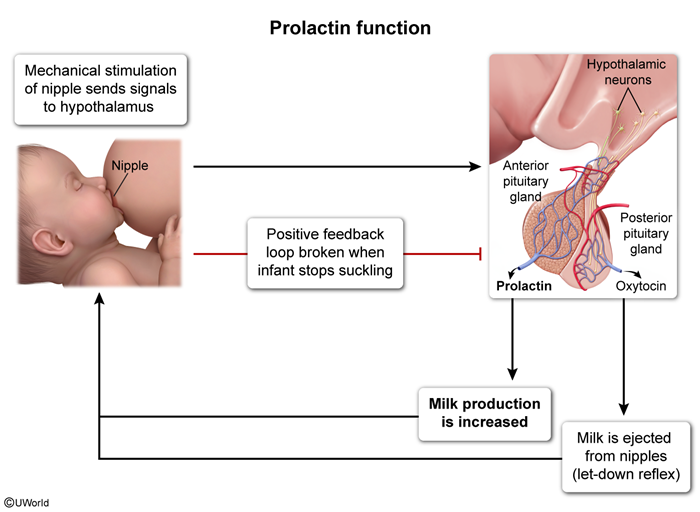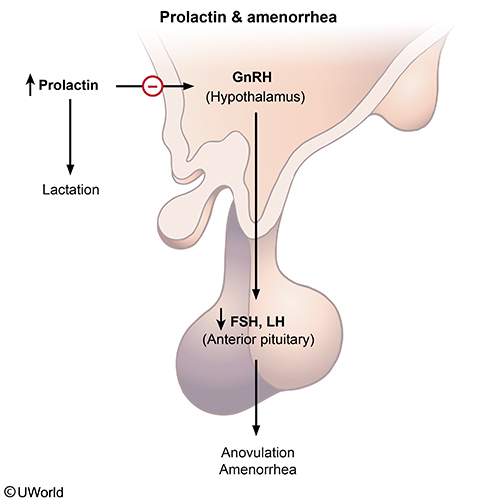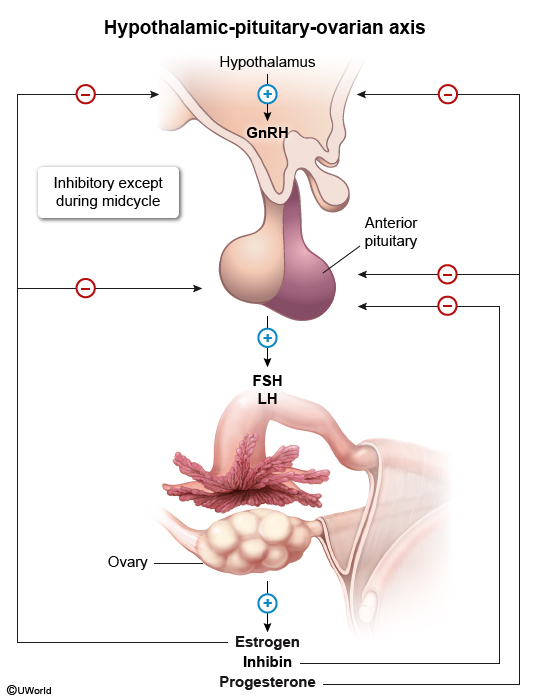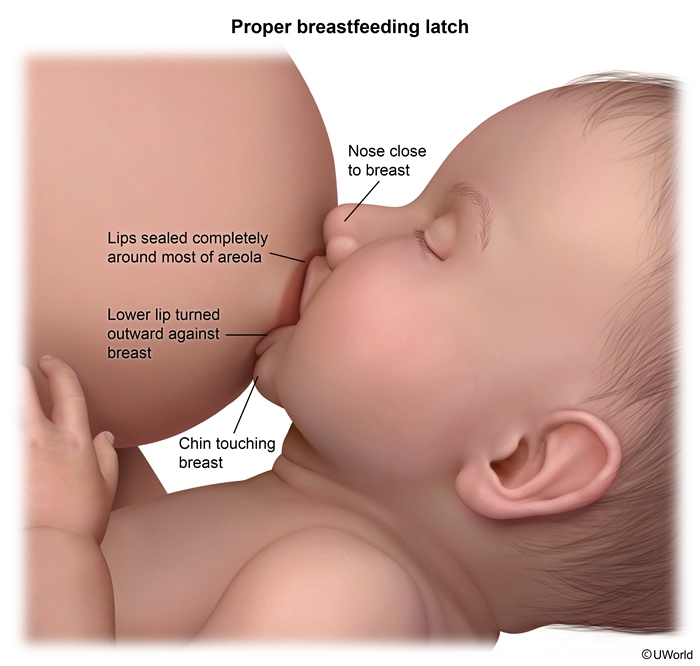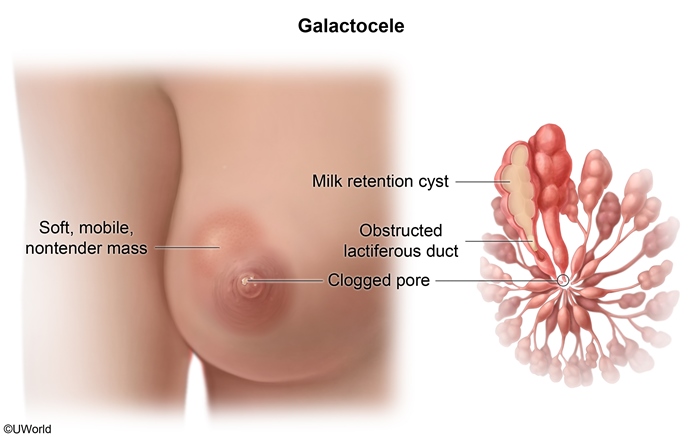Breastfeeding
Article Sections
Introduction
Breastfeeding is the optimal method for feeding infants due to its numerous health benefits for both the infant and the mother. Exclusive breastfeeding is recommended for the first 6 months of life, with continued breastfeeding while introducing solid foods during the first year.
This article will review various features of breastfeeding, including its physiology, effects on infant nutrition and immunity, benefits to maternal health, common concerns, and contraindications.
Lactogenesis
Lactogenesis is the process of milk production and secretion, including the changes in the mammary glands necessary to transition from undifferentiated glands to full lactation following birth. Lactogenesis is divided into the following stages:
- Stage I (secretory initiation) occurs during midpregnancy (~16 weeks gestation); pregnancy hormones (eg, prolactin, progesterone, human placental lactogen) promote mammary gland development and lactocyte differentiation (cells responsible for milk synthesis). Rising prolactin stimulates lactoctyes to produce the first product of lactation (colostrum), which is a thick, yellowish fluid that contains high concentrations of immunoglobulin and the protein lactoferrin. Colostrum provides essential immune protection and helps to establish the infant's digestive system; although it can be expressed prenatally, it is most often expressed postnatally (prior to stage II of lactogenesis). Further milk development and production is inhibited by high levels of placental progesterone.
Continue Learning with UWorld
Get the full Breastfeeding article plus rich visuals, real-world cases, and in-depth insights from medical experts, all available through the UWorld Medical Library.
Figures
